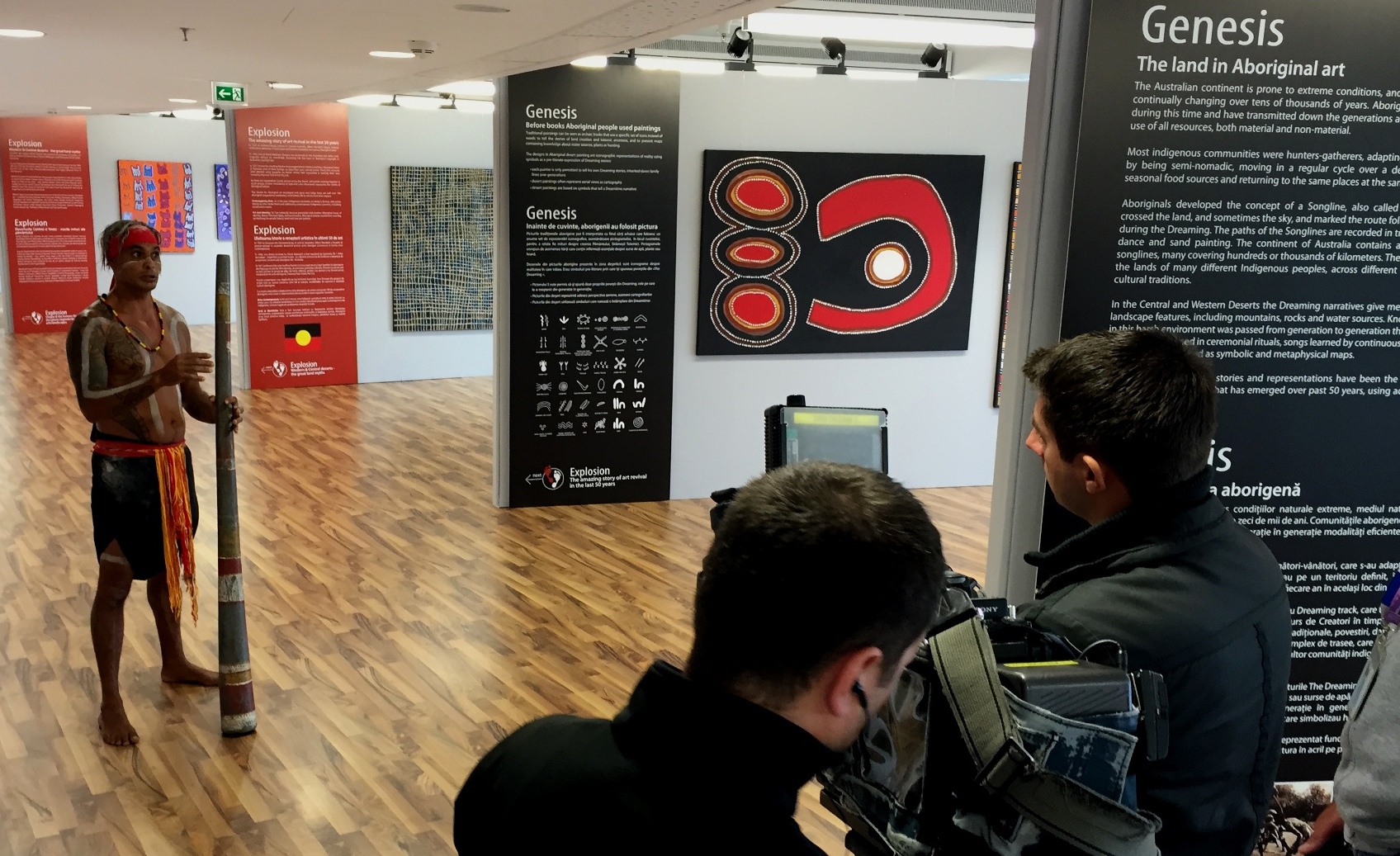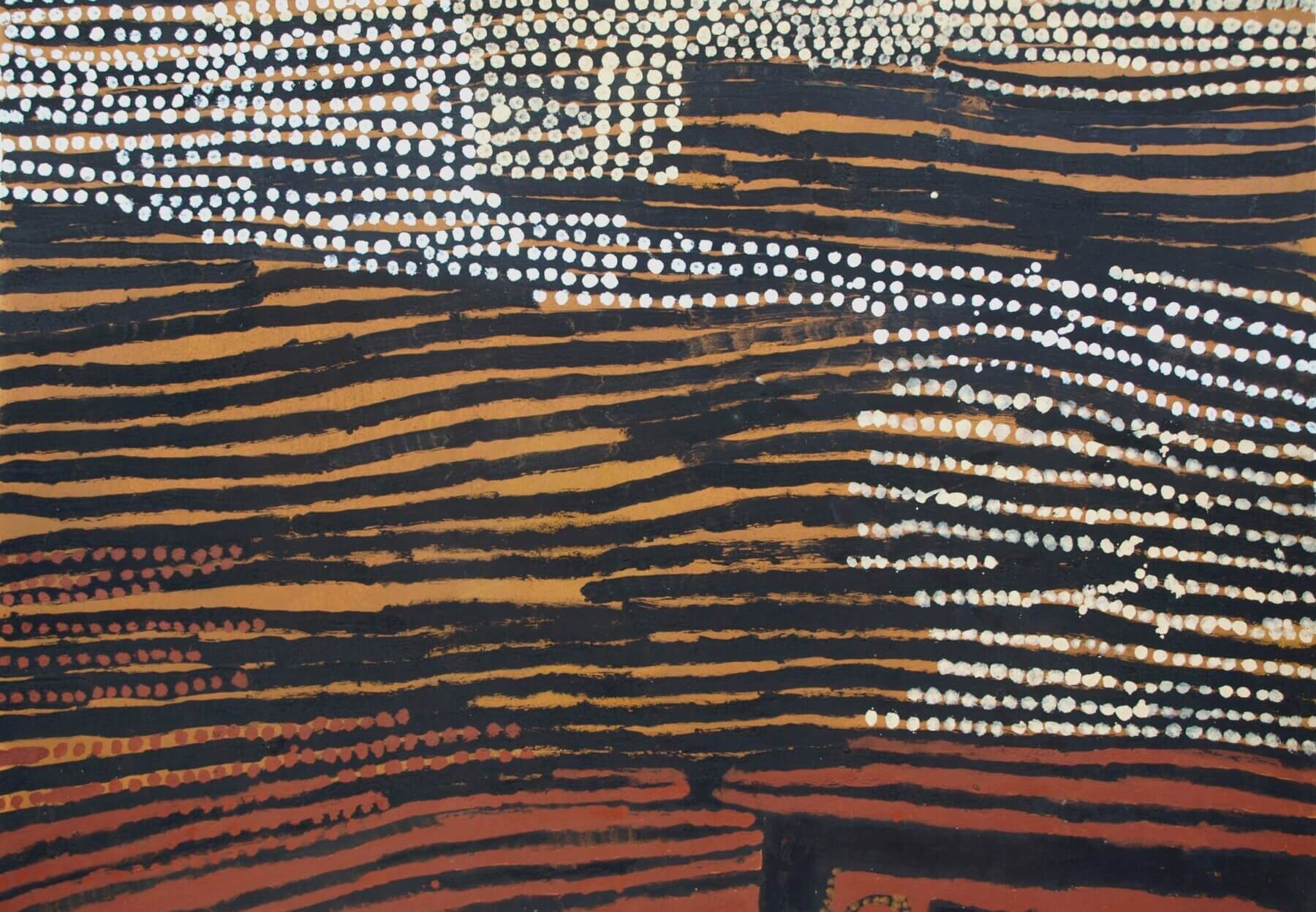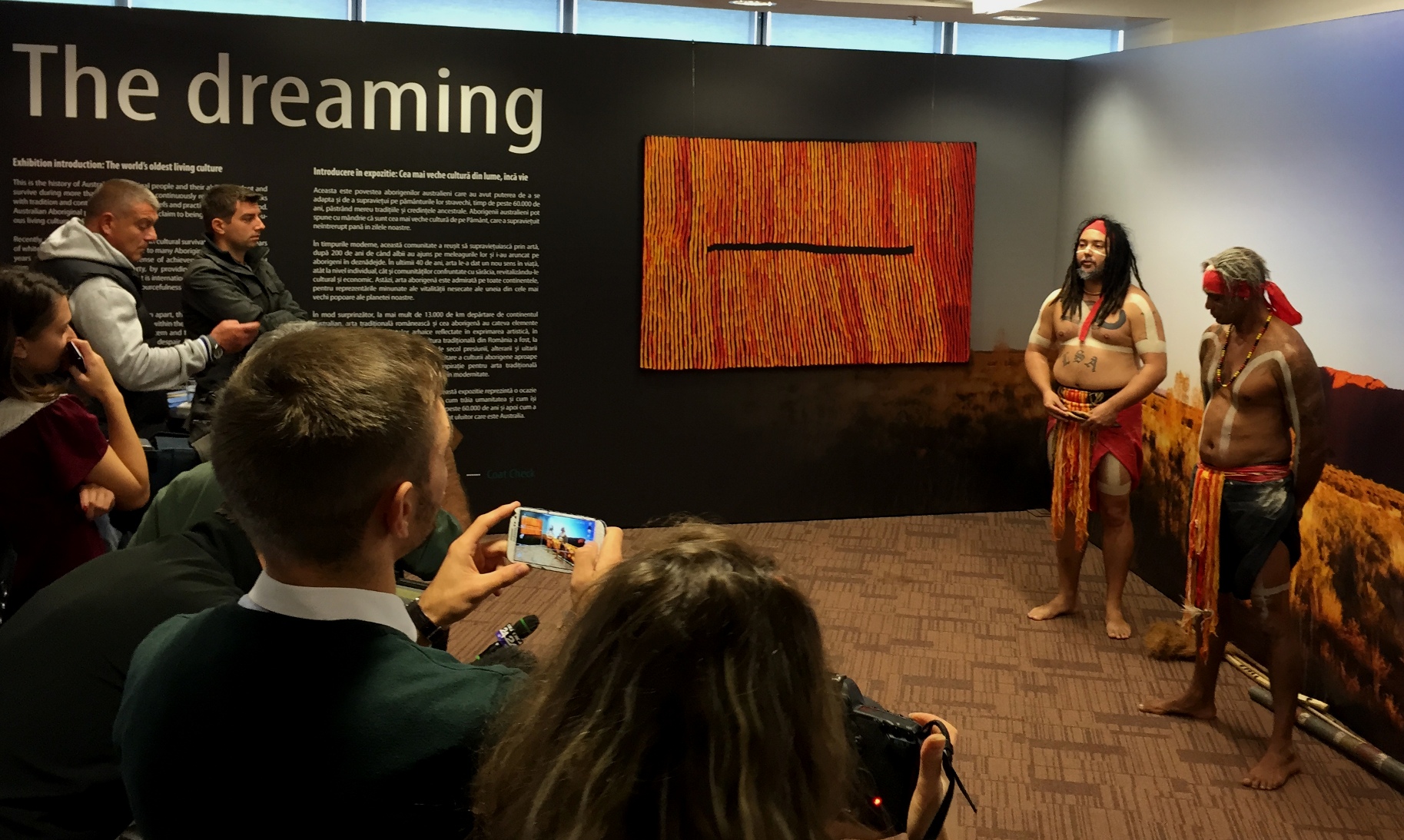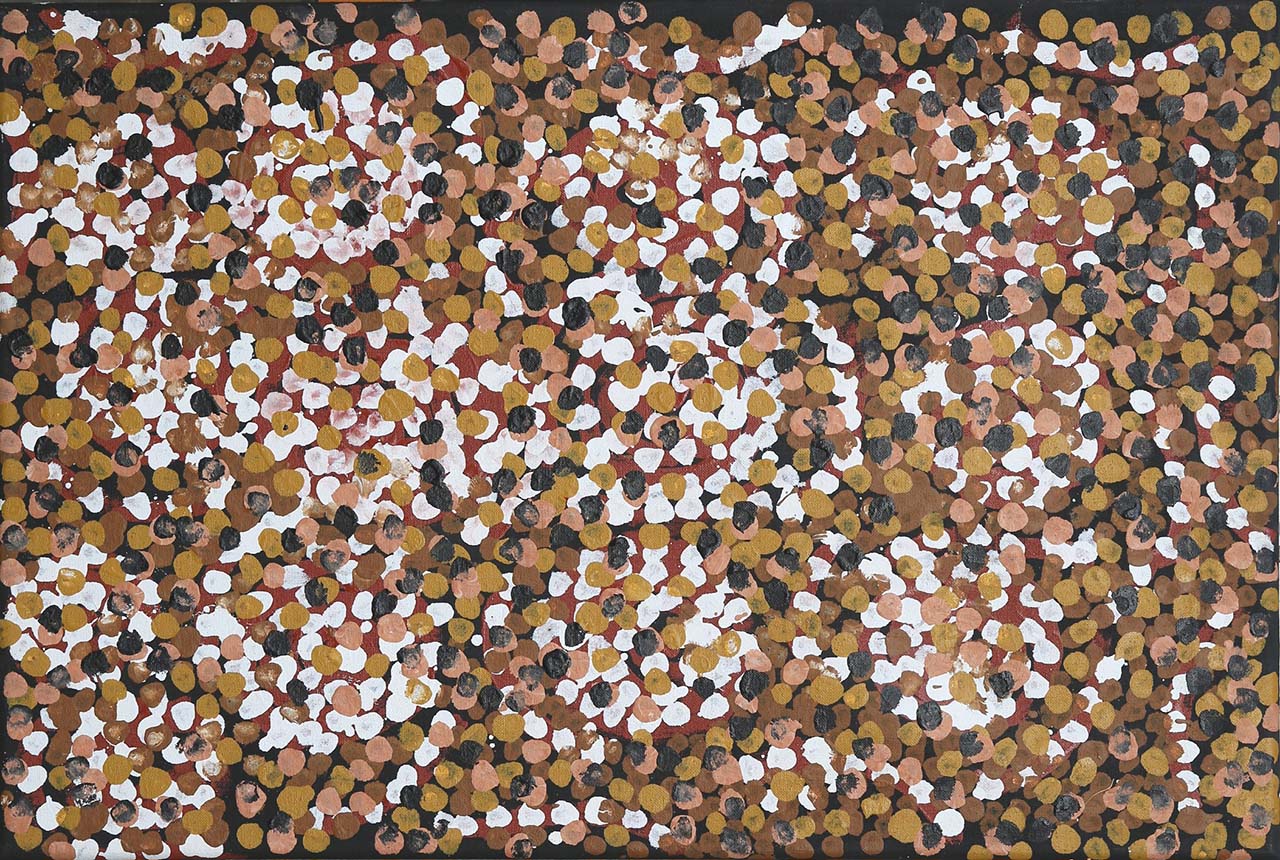Is Process More Important Than Outcome in Aboriginal Art?
In October an exhibition of Aboriginal art work featuring several hundred paintings opened in Bucharest in Romania. Japingka took a collection of work to that exhibition. For many in the European audience it was their first opportunity to see Aboriginal art and they asked some interesting questions.
In this article David Wroth discusses the question of what matters more for Aboriginal artists, the process or the outcome?
What Matters More, Process or Outcome?
This question is interesting. It was put to us by someone who worked in the arts area in Europe. I suspect they were looking at some of the paintings of the older artists. Maybe people like Pegleg Tjampitjinpa, and to a lesser extent Ronnie Tjampitjinpa and Luurn Willie Kew from the Kimberley.
They were looking at the degree of finish that the artists focused on for their paintings. I explained that artists often sang the story that they were painting as the artwork was produced. The artist is very much in the moment in terms of being with the story that they are painting.
The person asking the question wondered whether the paintings should be more polished, more finished? These were paintings done by senior people so from a European point of view maybe they felt that there should have more attention to detail. I suspect the answer is that the process is extremely important to Aboriginal people, and no doubt the finished process matters but to a lesser extent.
Artists At Work
There's many examples of artists who walk around their paintings, and give an indication they feel they've created something that is really, very impressive. They'll either give a big smile, put up one finger as number one. This demonstrates "I've made a really number one painting here."
There's pride in the finished work but the real value to an Aboriginal person is the process of connecting with the cultural story as they made the painting. Many artists seem to be fairly indifferent or certainly objective about the process once the painting is finished.
In other words, they are resolved - it's finished, it's done, they don't need to keep coming back to look at it. The process of making the work was the thing that gave them a lot of sense of accomplishment. Then after that that's it, finished, what else? What are we doing next? What happens next?
Seeing A Body Of Work
I think when artists see a body of their own work set up in the gallery they do take great pride. I've seen artists go around and touch the paintings, and reconnect to the story as they remember when they painted it. It could have been six months or a year ago but you can see the joy as they walk around all the different paintings that they've made, and connect with them, and move on to the next one. Once again in a way, they are really connecting with the process, and the story, and they are not going to look and say, "There's a blob of paint there that I should have fixed up." That's almost immaterial to Aboriginal artists. Often there's very little concern about bits and pieces that accidentally happened while a painting's being produced.
Attitude To Mistakes
Aboriginal artists are rarely, if ever, fretful about their work. You don't see them concerned that there's fine detail that they might have done this way, or that way, or changed. In fact, for many of the artists once a painting is made there's little interest in revisiting it as an editing process. They don’t say things like “This would have been much better if it had been red”. It’s rare that they’ll go back and change paintings. They paint until it's finished, and at the point at which they stop then it really is finished. They don't seem to want to make changes to reinterpret anything.
Difference With Western Art
I think this approach is definitely different to a Western artists' approach. Perhaps it comes down to the idea of making aesthetic judgement. Aboriginal artists are not making aesthetic judgments about how successful the painting is. They are making other sorts of judgments about how well it conveys the story that they've got in their head. The idea of aesthetic considerations are much more in the realm of European art than it is in the world of Aboriginal art.
The Surface of The Painting
I don't think Aboriginal people are analytical about the surface of the painting. They are probably analytical about the meaning that sits behind the surface of the painting. Perhaps Western artists are more analytical about the surface of the painting - the appearance, and less about the story that sits behind it. Both artists place some value on the appearance and some on the message. The difference lies in the degree of importance attached to each.
So in answer the question - I do observe that process is more important to Aboriginal artists than the outcome of what is produced.
Maybe this is a metaphor for the difference in the two cultures. The Western way is often concerned with the appearance of things whereas in the Aboriginal world the meaning of things has a higher value.
Read more:




